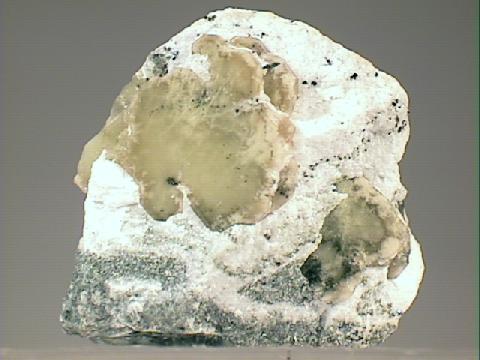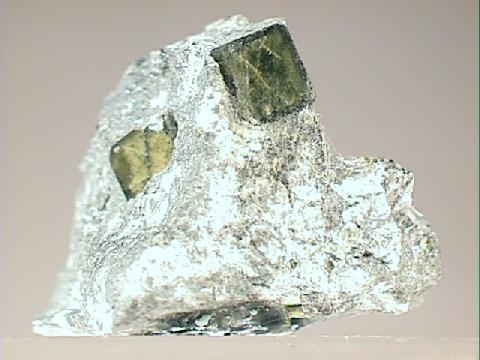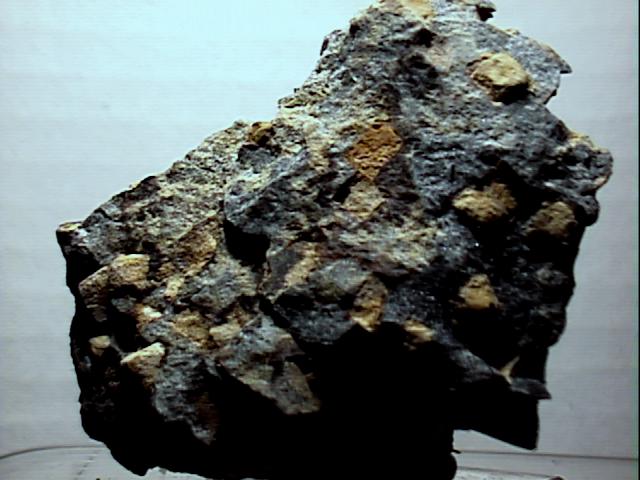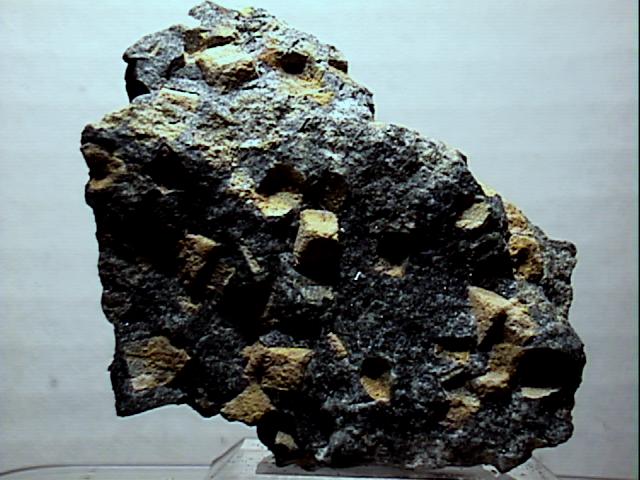 THE
MINERAL NARSARSUKITE
THE
MINERAL NARSARSUKITE
- Chemistry: Na2(Ti, Fe)Si4(O, F)11, Sodium Titanium Iron Silicate Fluoride.
- Class: Silicates
- Subclass: Inosilicates
- Uses: Only as mineral specimens and cut as gemstones for gemstone collectors.
Specimens
Narsarsukite is not a well known mineral, but it is a nice collection mineral.
It is named for the wonderful mineral locality at
Narsarsukite is also found at Mont Saint-Hilaire, Quebec; another agpaitic pegmatite location. Here is probably the best location for narsarsukite specimens as crystals are relatively large and well formed.
Narsarsukite has been cut as a gemstone, although do not expect to see it available in many jewelry stores. It is cut mostly for gemstone collectors, but is considered attractive. A cut stone of 0.31 carats was cut from the mines of Mont Saint-Hilaire, Quebec and is the largest known narsarsukite gemstone.
Narsarsukite's structure involves double chains of linked silicate tetrahedrons in a tube like arrangement. The chains are actually kinked into a what is best described as a "crankshaft" shape with the kinks going up and down like a crankshaft. The chemistry of narsarsukite may include yttrium, calcium and potassium, but they are not usually significant enough to include in the general formula.
PHYSICAL CHARACTERISTICS:
- Color is various shades of yellow, green, pink and brown as well as colorless.
- Luster is vitreous or adamantine to dull or greasy.
- Transparency: crystals are transparent to translucent.
- Crystal System is tetragonal.
- Crystal Habits include tabular and prismatic crystals often arranged into sprays and parallel aggregates.
- Cleavage is perfect in two directions (prismatic) and good in one direction (basal).
- Fracture is uneven to subconchoidal.
- Hardness is 6 - 7.
- Specific Gravity is approximately 2.6 to 2.8
- Streak is white.
- Other Characteristics: Index of refraction: 1.601 - 1.614 and 1.632 - 1.647.
- Associated Minerals are quartz,
microcline,
albite,
amphiboles,
carletonite,
lorenzenite,
calcite,
leucosphenite , natrolite and aegirine. - Notable Occurrences include the type locality at
Narsarsuk , Greenland and perhaps the best source of Mont Saint-Hilaire, Quebec, Canada as well as in north-central Montana, USA. - Best Field Indicators: Crystal habit, cleavage, color, associations and localities.







